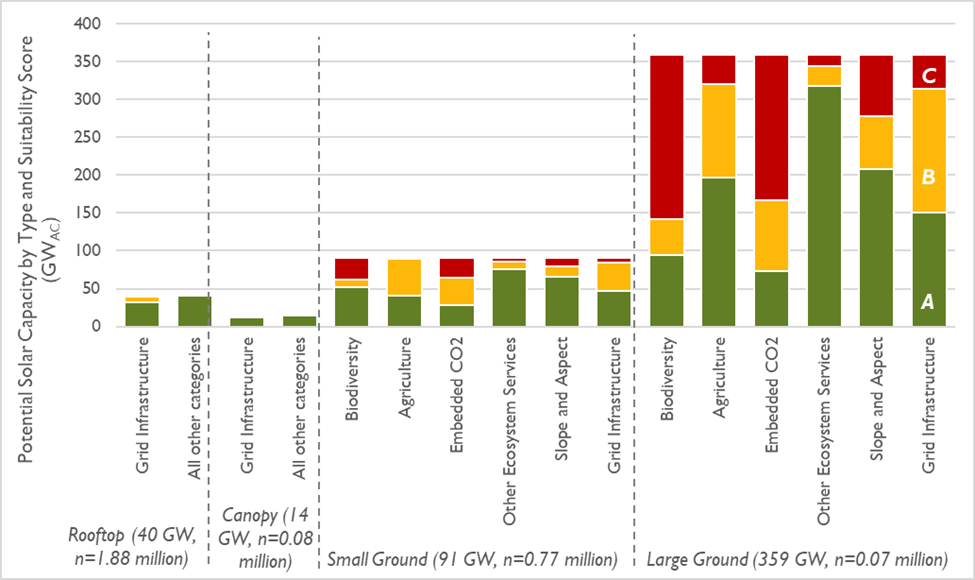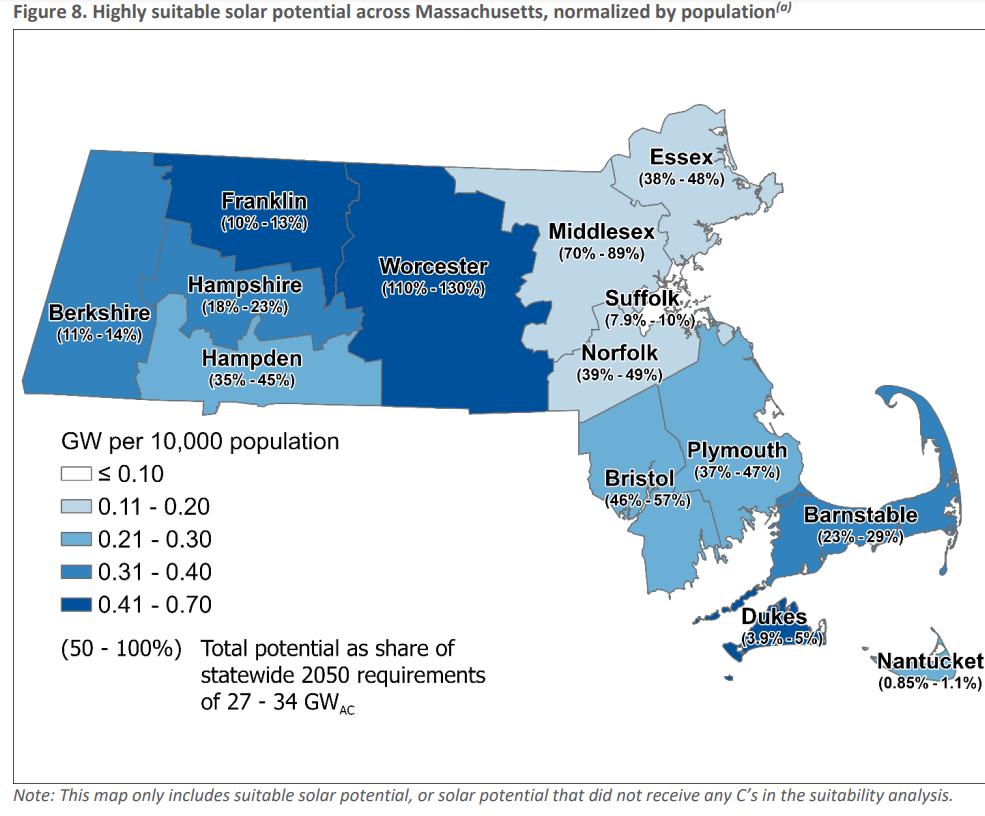According to analysis by the Massachusetts Department of Energy Resources (DOER), Massachusetts has the technical potential to add 506 GW of solar capacity. This is about 15 to 18 times the amount of solar capacity that is likely needed to meet the state’s decarbonization goals.
The conclusion, based on geographic information systems (GIS) mapping analysis, suggests that Massachusetts, a highly land-constrained and densely populated state, should have no trouble finding places to distribute local, clean electricity generation.
The state’s climate plan for 2050 estimates that 27 GW to 34 GW of solar capacity will be needed by 2050. This is considerable growth over the roughly 4 GW installed and operational today.
DOER determined that the state has 52 GW of “top rated” solar potential and 152 GW of “highly suitable” potential. These preferentially-ranked locations value land-saving installations like rooftop solar, canopies, and ground-mounted solar on landfills and other brownfield sites.
A consultant team from Synapse Energy Economics conducted a parcel-based geospatial analysis of every property tax parcel in the Commonwealth using ArcGIS software. The analysis considered land use and cost criteria such as biodiversity, carbon sequestration by forests, and electric infrastructure.

“The study shows we can site solar strategically to balance our land use and environmental justice priorities while meeting our solar and emissions reduction targets,” said Massachusetts Governor Maura Healy.
An interactable ArcGIS map can be viewed to identify the top rated solar locations, assisting developers and communities as they prospect for new project sites. The full report based on the mapping analysis can be found here.
“The StoryMap will be another important tool for our cities and towns to identify the best locations for solar in their communities,” said Lieutenant Governor Kim Driscoll.
The study behind the map included a stakeholder and public engagement process and gave practical direction on how much and where solar can be built while protecting, managing, and restoring natural and working lands to maintain valuable natural resources that help sequester and store carbon.
“These results should inform the development of equitable solar projects and policy to better serve and support environmental justice communities. Having identified where the most suitable potential is, we can now engage with these communities to support their clean energy goals, priorities, and access,” said Rebecca Tepper, energy and environmental affairs secretary, Massachusetts.
The report dovetails with resources provided by the state’s the Grid Modernization Advisory Council and the Commission on Clean Energy Infrastructure Siting and Permitting.
The report was released on the 15th anniversary of the establishment of Massachusetts’ Green Communities Program, which has awarded nearly $167 million in grants to cities and towns. In 2008, when the program was initiated, 3 MW of solar was operational in Massachusetts, and today there is over 4,000 MW of delivering emissions-free electricity in the state.
This content is protected by copyright and may not be reused. If you want to cooperate with us and would like to reuse some of our content, please contact: editors@pv-magazine.com.









By submitting this form you agree to pv magazine using your data for the purposes of publishing your comment.
Your personal data will only be disclosed or otherwise transmitted to third parties for the purposes of spam filtering or if this is necessary for technical maintenance of the website. Any other transfer to third parties will not take place unless this is justified on the basis of applicable data protection regulations or if pv magazine is legally obliged to do so.
You may revoke this consent at any time with effect for the future, in which case your personal data will be deleted immediately. Otherwise, your data will be deleted if pv magazine has processed your request or the purpose of data storage is fulfilled.
Further information on data privacy can be found in our Data Protection Policy.